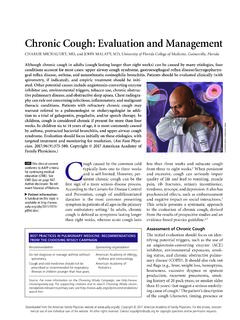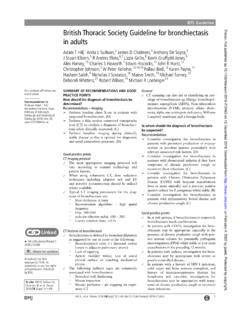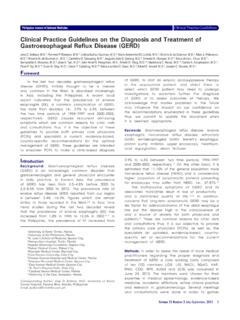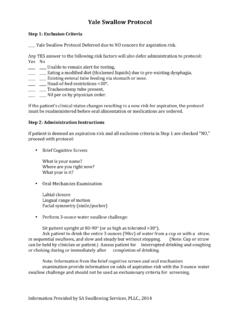Transcription of Health Risks - Centers for Disease Control and Prevention
1 Health Risks Associated with 9/11 and the WTC Disaster: Lessons LearnedPentagon photo courtesy of FEMA. Shanksvillephoto by vlashton, courtesy of a decade later, are you familiar with the 9/11 Health Risks ? Training ObjectivesUpon completion of this activity, participants will be able to: Identify patients who are eligible for care under the WTC Health Program Identify exposure-related Health Risks associated with environmental exposures from the WTC site Describe the lessons learned from the 9/11 disaster responseThe Clinical Practice Assessment Addressesthe core competencies of medical knowledge, patientcare,and practice-based learning Providesa baseline snapshot of knowledge, skills, attitudes, or competence Identifiesbarriers faced in evaluating, diagnosing, and treatingpatients Is a first step to acquiring and retaining knowledge that will affect clinical practice and patient outcomesLearning Goals for This Clinical Practice AssessmentUponcompletion of this activity, participantswill beableto.
2 Identify immediate, short-term,and long-term Health Risks posed by exposure to disaster and/or terrorist attacks to responders and survivors Identifycomorbidities most common in survivors and responders to the 9/11 World TradeCenter (WTC),Pentagon, andShanksville, Pennsylvania sitesTarget Audience This activity is intended for clinicians who have or may encounter patients who were exposed to environmental hazards on 9 terrorist attacks on 9/11 at the World Trade center (WTC), the Pentagon, and Shanksville, Pennsylvania, occurred more than 13 years ago, yet many of those affected by the disaster are still suffering from Health effects today. Clinicians, not only in these geographic locations but elsewhere in the country, may see patients who were exposed to toxins on that day or in the months that followed. Clinicians should be aware of the common Health conditions that have been associated with hazardous 9/11 exposures and the benefits that may be available to their patients under the WTC Health Program.
3 AUTHORS OF THIS COURSE INCLUDE:Iris G. Udasin, MDDenise Harrison, MDPaul Park, PsyDLaurie I. Breyer, JD, MAIRIS G/ UDASIN, MDProfessor of Environmental and Occupational MedicineDirector of Environmental & Occupational Health Sciences Institute Clinical center & Employee Health ,Rutgers University - Robert Wood Johnson Medical SchoolPiscataway, New Jersey DENISE HARRISON, MDDirector, World Trade center Medical Monitoring and Treatment ProgramAssociate Medical Director, Bellevue/NYU Occupational Medicine ClinicAssistant Professor of Medicine and Environmental MedicineNew York University School of MedicineNew York, New York PAU L PA R K , PSYDM ental Health ClinicianWorld Trade center Clinical center of ExcellenceRutgers UniversityPiscataway, New JerseyLAURIE I. BREYER, JD, MADeputy DirectorWorld Trade center Health ProgramNational Institute for Occupational Safety and HealthCenters for Disease Control and Prevention Question 1 The term aerodigestiveillness is used to describe acute and chronic Health effects suffered by people exposed to hazards stemming from the 9/11/01 World Trade center (WTC) terror attacks.
4 The term aerodigestiveincludes all of the following conditions except: Obstructive airwaydisease, suchas asthma and chronic bronchitis gastroesophageal reflux Disease (GERD) Inflammatory bowel Disease Reactive upper airways dysfunction syndrome (RUDS)Answer 1 The term aerodigestiveillness is used to describe acute and chronic Health effects suffered by people exposed to hazards stemming from the 9/11/01 World Trade center (WTC) terror attacks. The term aerodigestiveincludes all of the following conditions except: Obstructive airwaydisease, suchas asthma and chronic bronchitis gastroesophageal reflux Disease (GERD) Inflammatory bowel Disease Reactive upper airways dysfunction syndrome (RUDS)Answer 1 ExplanationAn estimated 400,000 first responders, residents, workers, and others were exposed to the caustic dust (pH of 11) and toxic pollutants in the dust and debris cloud from the collapse of the WTC buildings on September 11, 2001.[1 -3]Many people exposed to this "WTC cloud" -- through respiration, ingestion, or skin absorption --manifested symptoms of acute injury to their airways and gastroesophageal junction , hence the term aerodigestive.
5 Occupational studies of caustic substances inhaled have demonstrated injuries to upper and lower airways, cough, heartburn and reflux consistent with GERD.[4]The aerodigestiveinjuries led to enduring diagnoses of asthma, chronic cough syndrome (WTC cough), chronic laryngitis, chronic nasopharyngitis, reactive airways dysfunction syndrome (RADS), RUDS, GERD, and sometimes to fibrosis, granulomas, or other nodules within the lung parenchyma[1,2,5,6]; however, inflammatory bowel Disease has not been noted to be excessive in those exposed to 9 2 Which of the following exposure factors reported by area residents, disaster responders, and local workers has been shown to be highly correlated with the subsequent development of acute and chronic aerodigestivehealth effects? Performing rescue and recovery work at the Staten Island landfill Report of being engulfed by the WTC dust cloud Smoking at the disaster site Having a residence close to the disaster siteAnswer 2 Which of the following exposure factors reported by area residents, disaster responders, and local workers has been shown to be highly correlated with the subsequent development of acute and chronic aerodigestivehealth effects?
6 Performing rescue and recovery work at the Staten Island landfill Report of being engulfed by the WTC dust cloud Smoking at the disaster site Having a residence close to the disaster siteAnswer 2 ExplanationAcute and chronic Health effects of WTC exposure were seen in many people exposed to 9/11, including traditional and nontraditional responders, disaster recovery workers, local workers, area residents, students, and those caught in the 9/11 dust cloud.[7]Evaluation of WTC dust found particles containing pulverized cement, glass fibers, asbestos, and a multitude of chemicals with a pH of 9 to 11. Airborne particulate levels were highest immediately after the attacks and moved over and past the disaster area.[8]Activities in and around the disaster area disturbed settled dust and debris with potential to impact the Health of those who were exposed.[1]Although early arrival and being caught in the 9/11 dust cloud were associated with greater Health consequences, persons exposed to lower levels of contaminants over time --such as through exposure to contaminants trapped inside ventilation systems -- also developed Health sequelae (eg, asthma).
7 [4,9]Question 3 People living, going to school, and/or working in the area of the WTC disaster were at risk for psychological trauma or distress from many sources. This group was leastlikely to Eating disorders Severeheadaches New or worseningrespiratorysymptoms New or worseninggastrointestinalsymptomsAnswer 3 People living, going to school, and/or working in the area of the WTC disaster were at risk for psychological trauma or distress from many sources. This group was leastlikely to Eating disorders Severeheadaches New or worseningrespiratorysymptoms New or worseninggastrointestinalsymptomsAnswer 3 ExplanationDisaster exposure includes psychological hazards, such as the sudden and unexpected loss or serious harm of loved ones; serious injury or life threat; loss of one s home, possessions, workplace, school, or community; forced evacuation and relocation; and change in employment. Nearly two-thirds ( ) of those evacuating the WTC buildings were caught in the WTC cloud,[7] which was described as a threat to one s life.
8 Data from the WTC Health Registry, involving 71,437 enrollees, found that survivors caught in the WTC cloud were more likely to report any injuries, [respiratory symptoms ( ), heartburn/reflux ( ), severe headaches ( ), and/or serious psychological distress ( )] than those not directly exposed to the WTC cloud.[7]Exposure to 9/11 has a high degree of comorbidity with respiratory, gastrointestinal, and mental Health conditions. The WTC Clinical Centers of Excellence that offer integrated services (psychiatric and medical) report enhanced therapeutic engagement and treatment compliance.[10]Question 4 Many studies were performed on members of the Fire Department, City of New York (FDNY) concerning the Health effects of WTC exposure. What is the scientific advantage of using the FDNY cohort when exploring linkage between 9/11 exposures and Health outcomes? Firefighterstend to smokelessthanotheroccupationalgroups Access to fitness training in most fire stations Easy access for retirees to obtain Health care Availability of predisastermedical information (such as spirometry and standardized Health assessments)Answer 4 Many studies were performed on members of the Fire Department, City of New York (FDNY) concerning the Health effects of WTC exposure.
9 What is the scientific advantage of using the FDNY cohort when exploring linkage between 9/11 exposures and Health outcomes? Firefighterstend to smokelessthanotheroccupationalgroups Access to fitness training in most fire stations Easy access for retirees to obtain Health care Availability of predisastermedical information (such as spirometry and standardized Health assessments)Answer 4 ExplanationEpidemiological studies exploring causation require accurate and consistent characterization of exposures and Health outcomes of concern. Health outcomes are most useful when there is a known change from baseline or predisasterstatus. As such, FDNY had collected standardized annual medical information from their active force since 1987 and was therefore well-positioned to establish exposure- Disease linkages in the aftermath of 9/11. Investigators were able to assess pulmonary function in 12,079 New York firefighters between January 1, 1997 and September 11, 2001, including nearly 32,000 spirometry tests.
10 [11]Firefighters exposed to 9/11 had a substantial reduction in pulmonary function that followed a dose-response pattern and was independent of prior smoking or airflow obstruction,[12]even though this workforce had low prevalence of smoking, were more physically fit, and had access to occupational Health services compared with the general population. Question 5 Congress provided funding to treat specific Health conditions thought to be linked with 9/11 exposure. What kind of information was required to advocate for such a linkage? Standardized medical, psychiatric, and exposure histories, examinations, and medical testing Media reports and photos about the terrorattacksthatdidnot includeenvironmentalmeasurement Evaluation of individualtreatmentrecords fromcommunitypractitionersor local medicalfacilities Stakeholderadvocacythatdidnot includesystematicmedicalevidenceAnswer 5 Congress provided funding to treat specific Health conditions thought to be linked with 9/11 exposure.

















